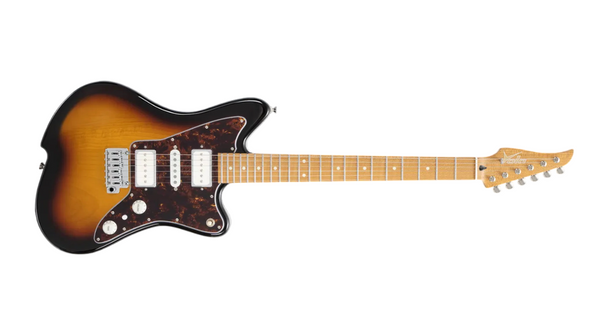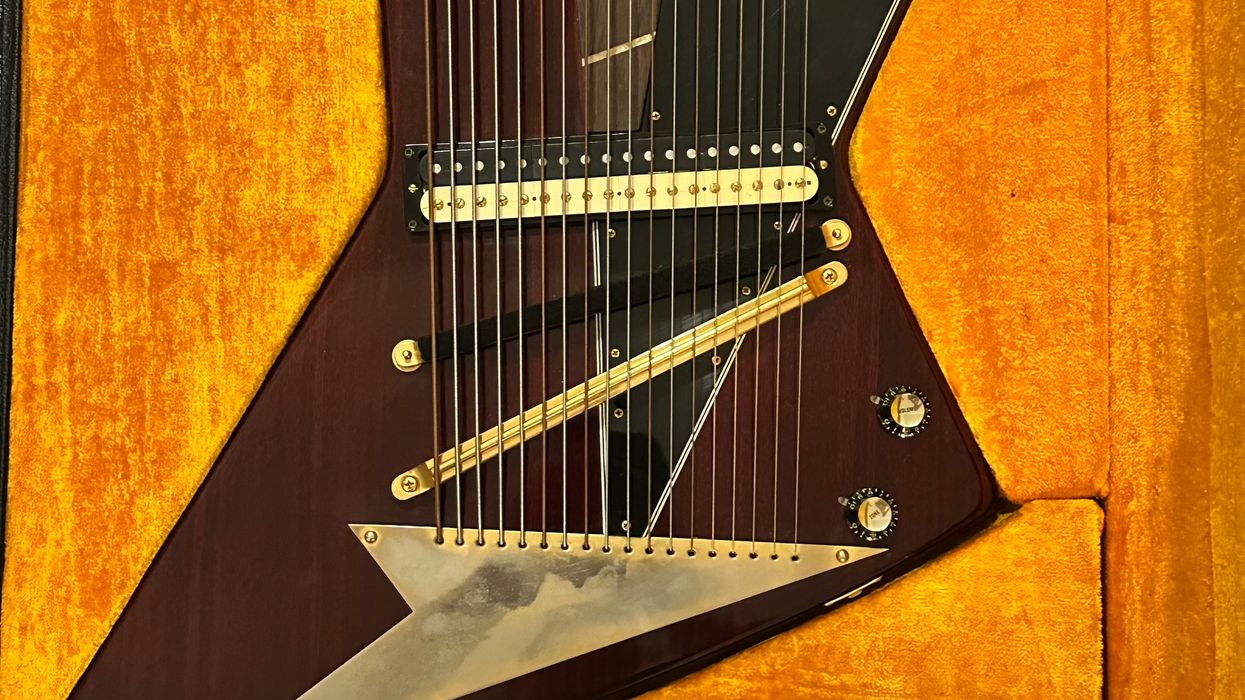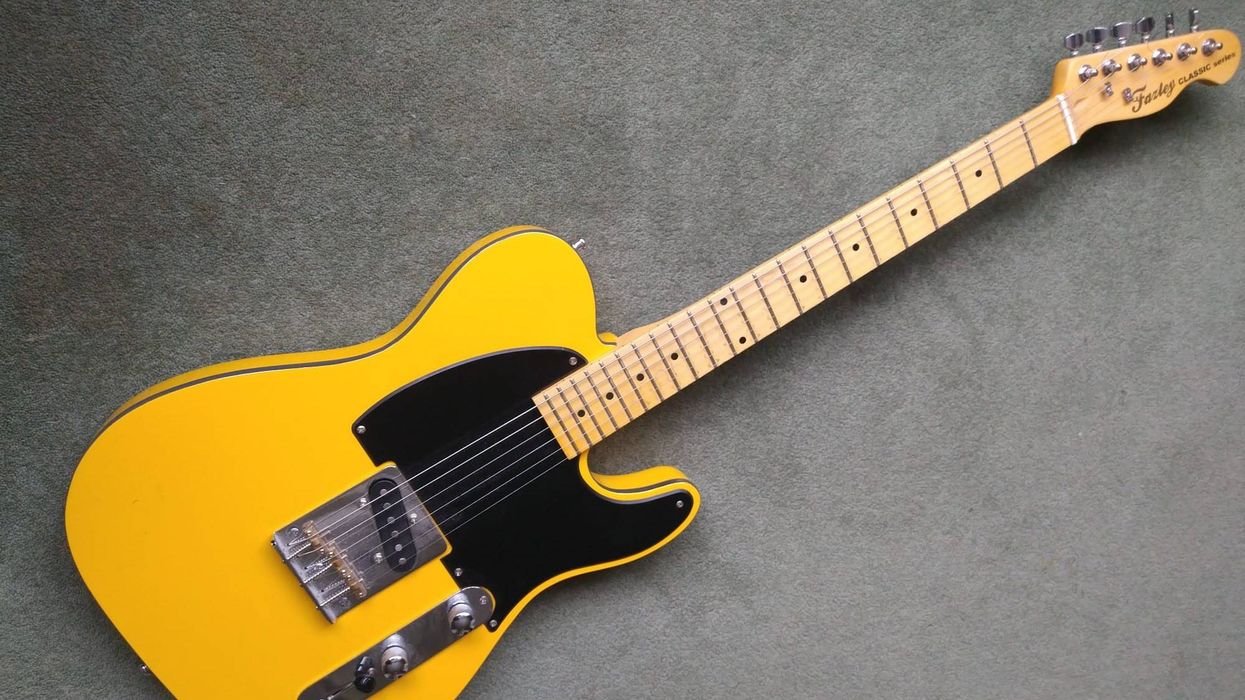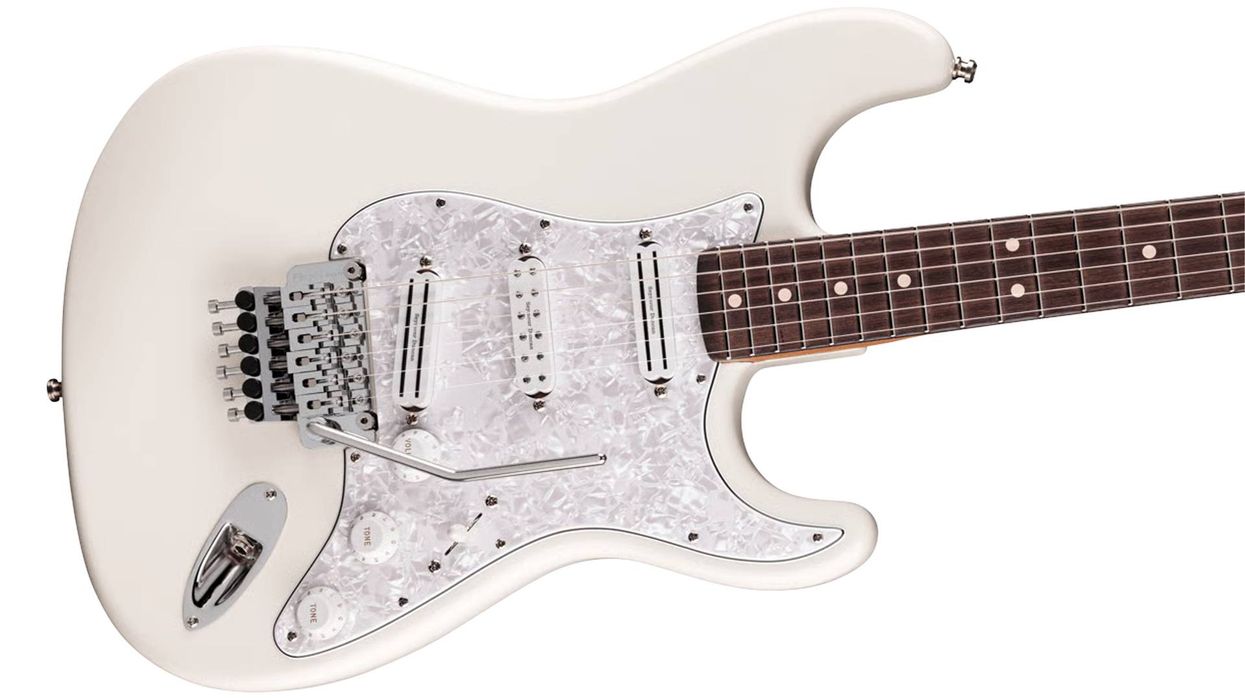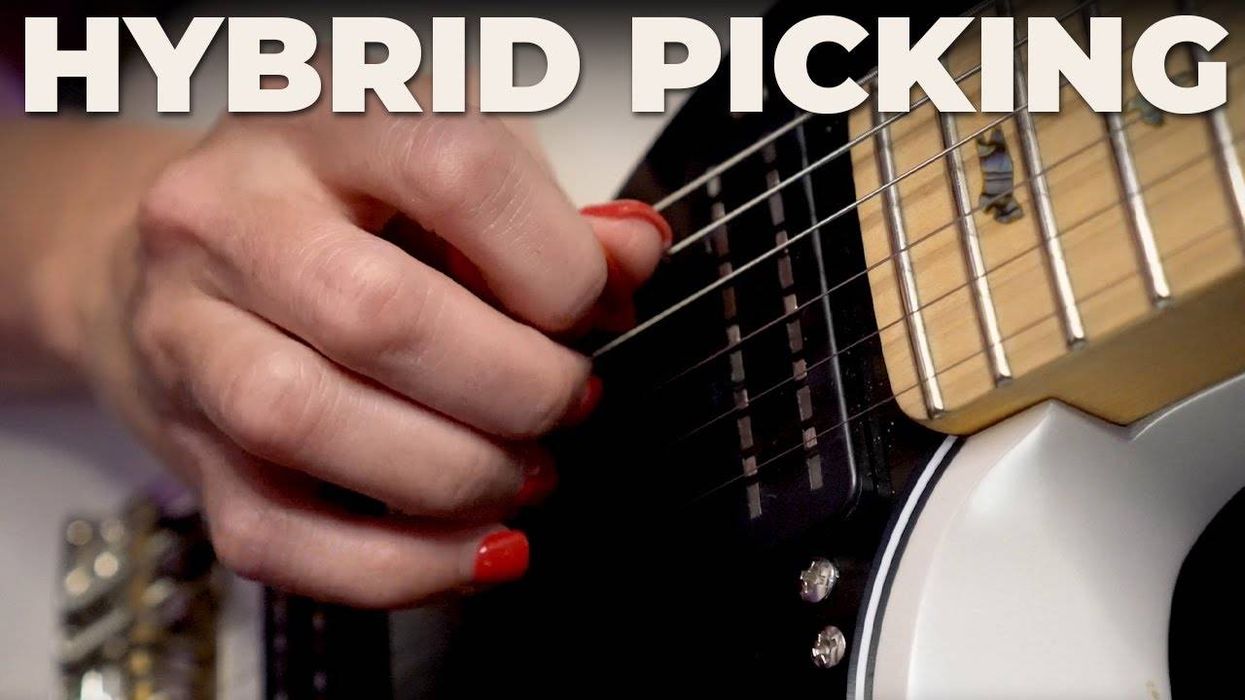For nearly 10 years, Vola Guitars' Japan-made instruments stood out for their somewhat unorthodox features, quality execution, visual vibes that walk the line between traditional and modern, and mid-level prices that rival industry heavyweights. In the company’s varied line of 6- and 7-string guitars (and 4- and 5-string basses), the JZ FRO is more on the traditional end. Yet it still stakes out its own territory in terms of style and performance.
Subtle Upgrades
Vola’s most distinctive aesthetic feature is undoubtedly the bodyline scoop/flourish near the rear strap button. On the JZ FRO, it lends a dash of elegance and sophistication to an outline that might otherwise seem too literally Jazzmaster-like, while the handsome roasted maple neck, swooped reverse headstock, and nonstandard pickup scheme help make it clear this isn’t your average offset. It’s a classy, understated look even in the model’s flashier aged-copper and shell-pink hues. But look closer and you’ll note appointments that a lot of seasoned guitarists will appreciate, including Luminlay position markers, stainless steel frets, and a direct-to-output circuit bypass switch situated between the volume and tone knobs.
Slicing and Then Some
It’s not often you see a solidbody outfitted with a pair of humbucker-sized P-90s and a Strat-style middle pickup. The P-90s are alnico 5 units measuring 9.5k and 10.5k ohms resistance. To avail you of this circuit’s numerous tones the JZ FRO incorporates a deceptively simple-looking control array. There’s a lone tone knob, a traditional 3-way selector, and a master volume that pulls up to bring the S-style middle pickup into the mix. In this mode, with the pickup selector down, you get the bridge and middle pickup, in the middle you get all three pickups, and in the up position you get the neck and middle pickups. (More on mid-pickup tones in a minute.)
The P-90s are pretty hot, with a lot of punch and zing. In fact, the bridge pickup’s leanness and the neck pickup’s gristliness sometimes evoke Gibson P-100s.
With the JZ FRO routed through a Celestion Ruby-outfitted 6973-powered combo set to a bit of grind, I loved the bridge pickup’s tough airiness. There’s a detailed, vintage-esque character, and it gets toothier as you pair it with a boost or dirt pedal to drive an amp hard. Compared to the vintage-spec Curtis Novak P-90s in my Les Paul Special, the Vola’s bridge pickup is a little less warm and brawny, but also probably a bit more malleable and adaptable to different genres, especially if you’ve got a lot of effects in your signal path. The neck pickup is similarly powerful, though its contrasts with a traditionally voiced P-90 feel less apparent.
How about that middle pickup? Paired with the bridge unit, it yields funky, Strat-like quack—a tone you’re not going to get with most dual P-90 guitars. Accent them with a wiggle of the super smooth-operating Gotoh trem, and the Strat allusion is even stronger. Mind you, all this tone variation is available beforeyou activate the tone-circuit bypass. It acts like a powerful onboard boost: Everything is louder, hotter, and leaner.The Verdict
Vola deserves big kudos for packing so many unique features into a guitar that feels and plays this nicely at such a reasonable price. The novel tone-circuit bypass could help you cut through a dense mix or boost your solo even when you’re away from your pedalboard. That said, in some positions I found it sounded a little strident or hi-fi, and the fact that the circuit-bypass mode renders the volume knob useless makes it something of an all-or-nothing proposition. The added middle pickup expands tonal possibilities beyond P-90 norms, but don’t expect the same type of added clarity you’d get from a Strat’s middle pickup. Even so, the JZ FRO’s exceptionally smooth performing hardware and excellent craftsmanship make playing a breeze and a pleasure, and its VFP90 pickups pack a mix of power, clarity, and flexibility that make it a great choice for biting rock and thick, bristling blues tones.
